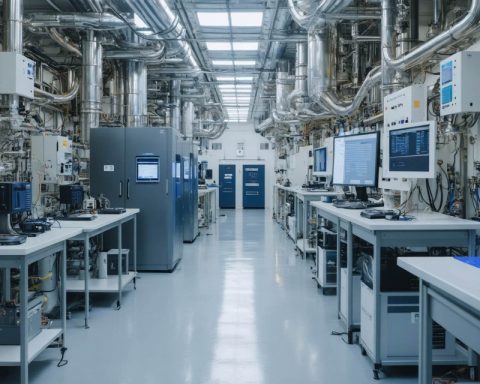- Electric vehicles (EVs), led by brands like Tesla, Nissan, and BMW, are spearheading a global shift towards zero-emissions transportation, reshaping urban environments.
- Bicycles and electrified public transit are integral components in the transition to cleaner urban mobility, reducing reliance on fossil fuels and decreasing carbon footprints.
- Emerging technologies like solar-powered trains and hydrogen-fueled buses suggest a diverse future for clean transportation, emphasizing innovation and sustainability.
- Transportation currently accounts for nearly 24% of global CO2 emissions, making the transition to clean options vital in combating climate change and promoting healthy urban areas.
- Challenges such as inadequate infrastructure and high initial costs of clean vehicles highlight the need for incentives and policy support to advance the clean transportation agenda.
- The push towards clean transport encourages thoughtful urban planning and equitable mobility solutions, integrating diverse modes of transport into daily life.
- Embracing clean transportation is not just a choice but a collective responsibility, essential for environmental stewardship and ensuring a sustainable future for the planet.
The streets buzz with the hum of innovation as sleek electric vehicles glide silently by, weaving a tapestry of a greener future. Clean transportation isn’t just a trend—it’s a revolution reshaping cities worldwide. Every charge, every mile, charts a path towards a sustainable tomorrow.
Step onto any bustling urban street, and you’ll discover a landscape in evolution. Bicycles zip through dedicated lanes, riders blending seamlessly with the heartbeat of the city. In the air, the scent of exhaust fades, replaced by the crisp promise of electrification. With each pedal and battery, the step toward clean energy solutions becomes a stride.
Electric cars, once a distant dream, now command roads globally. Tesla and a fleet of competitors such as Nissan and BMW lead the charge, each vying for a share of the zero-emissions market. These vehicles whisper sustainability with every turn of their eco-friendly tires, paving the way for decarbonized economies.
Yet, electric cars merely scratch the surface. The future of clean transportation brims with possibility. Imagine solar-powered trains racing down tracks, and hydrogen-fueled buses carrying communities forward with the uplifting promise of innovation. Meanwhile, public transport systems embrace efficiency with open arms, offering electrified services that connect people to places with unrivaled environmental mindfulness.
This transformation is vital. According to the International Energy Agency, transportation produces nearly 24% of global CO2 emissions from fossil fuels. Transitioning to clean transportation not only addresses climate change but also regenerates urban areas, fostering healthier environments.
Yet the road to change isn’t without its challenges. Infrastructure growth lags; charging stations remain sparse in many regions, and the initial cost of clean vehicles deters some consumers. Initiatives like federal incentives and city-wide policies unlock doors, accelerating the shift to a greener transportation ecosystem.
The shift toward clean transportation also ignites conversations about infrastructure, urban planning, and equity. Visionaries draft cities that promise seamless integration of diverse transport modes, blending bicycles, walking paths, and electrified public transit into everyday life.
But why change now? The stakes are higher than ever. Our planet demands effective stewardship, and embracing clean transportation offers a powerful tool in battling the climate crisis. By reducing reliance on fossil fuels, promoting renewable energy, and fostering innovation, society can mitigate environmental impact.
The takeaway message is clear: clean transportation is not just an option; it’s a responsibility. By championing this transformation, individuals and communities contribute to a legacy of sustainability. As cities transform and technologies advance, stepping on this path is no longer just a personal choice but a shared commitment to the planet and future generations.
The road ahead glistens with promise as clean transport vehicles continue their silent crusade. So next time you see an electric car cruising past or a group of cyclists joyfully riding to their destination, remember that they carry more than passengers—they carry hope for a healthier planet.
The Surprising Future of Clean Transportation: What You Need to Know Now
Expanding the Horizon of Clean Transportation
The world of clean transportation is not only evolving but rapidly transforming the way we move and think about sustainability. In this expanded view of clean transit, we’ll delve deeper into the secondary layers of innovation, industry trends, and pragmatic steps individuals and policymakers can take to further this green revolution.
Real-World Use Cases and Industry Trends
While electric vehicles (EVs) are already making a substantial impact, other forms of clean transportation are gaining traction:
– Solar-Powered Trains: Countries like the Netherlands and India are pioneering solar-powered railways. The Netherlands operates entirely on wind energy for its trains, while India has installed solar panels atop train cars to generate electricity. This exemplifies solar mobility’s potential in mass transit.
– Hydrogen Fuel-Cell Buses: Hydrogen-powered buses are appearing in cities like Seoul and London. These buses emit only water vapor, offering a pollution-free alternative to traditional combustion engines.
– Electrified Public Transport: Cities such as Oslo and Shenzhen have committed to turning their entire public bus systems electric, significantly reducing urban pollution.
Challenges and Limitations
Despite progress, clean transportation faces several hurdles:
1. Infrastructure Development: The deployment of charging stations and hydrogen refueling points is inconsistent, with rural and underdeveloped areas lagging behind urban centers.
2. High Initial Costs: The upfront investment for consumers remains high, despite long-term savings. However, governmental incentives can mitigate these costs.
3. Battery Technology and Recycling: Battery production and disposal pose environmental challenges. Sustainable materials and recycling improvements are necessary to make EVs truly green.
Market Forecasts and Insights
– According to BloombergNEF, electric vehicle sales may surpass combustion engine vehicles by 2030 as battery technology improves and costs drop.
– The global hydrogen fuel cell market is expected to grow at a compound annual growth rate (CAGR) of over 25% in the next decade, driven by advances in the automotive and public transport sectors.
Pros and Cons Overview
Pros:
– Reduced Emissions: Significant decrease in CO2 and other pollutants.
– Operational Cost Savings: Lower energy and maintenance costs for EVs.
– Innovative Urban Design: Cleaner air encourages the development of pedestrian-friendly and cyclist-friendly urban environments.
Cons:
– Initial Expense: High purchasing costs for vehicles and infrastructure.
– Energy Storage: Challenges with battery disposal and energy density.
Actionable Recommendations
1. Embrace Multi-Modal Transport: Integrate cycling, walking, and public transport into your daily routines to reduce your carbon footprint.
2. Advocate for Policy Changes: Encourage local governments to invest in infrastructure and offer incentives for clean transportation.
3. Stay Informed: Educate yourself about the latest developments in clean technology and consider supporting companies that prioritize sustainability.
Quick Tips for Consumers and Policymakers
– Consumers: Take advantage of incentives and rebates when purchasing EVs. Consider hybrid options if a full transition isn’t feasible.
– Policymakers: Focus on advancing infrastructure for electrified public transport and offer more robust policy frameworks that support clean energy projects.
Explore the impact of clean transportation in shaping our cities and future. For more information, check out resources and updates from International Energy Agency.
By understanding and embracing these trends, we take collective steps towards a sustainable and healthier planet, ensuring a lasting legacy for future generations.













